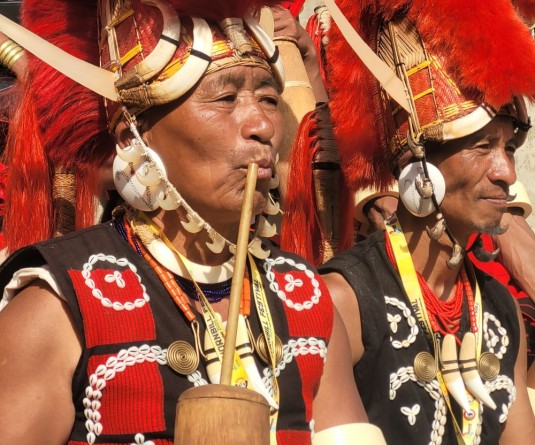
Ashikho Pfuzhe
DIMAPUR | JUNE 3
Nestled among the green mountains in the heart of Ao country, Mopungchuket is one tourist village where life moves at a leisurely pace, where tradition co-exists with modernity and where the tragic love saga of the local Romeo and Juliet (Jina and Eitiben) is immortalized in sculpture and two towers.
Barely some twenty-minute drive from Mokokchung town (16 km) and perched at an altitude of 1,324 metres above sea level, the picturesque village offers a range of sights and sounds - from the meandering Milak River downhill to placid Süngkotenem Lake on the upper crest of the village - no other tourist village in Nagaland can boast of.
Mopungchuket has much to delight visitors and tourists alike: Jina and Etiben memorial towers, traditional morungs, log drums that date back to 1890, the Longrangtenem Park where traditional houses are tastefully done with modern facilities for tourists.
Another attraction is the amphitheatre at Süngkotenem Park, which offers a glimpse of modernity intertwined with history as evident from the six larger-than-life wooden sculptures placed between the concrete columns.
The wooden sculptures are a marvel in themselves and the chiseled counters of each sculpture has either an allegory or folklore interwoven into it. The rope bridge over Süngkotenem Lake is a rare treat for feet accustomed to concrete pavements.
In ancient times, it was believed that the deity of the lake kept a benign watch over the village and protected it from invaders. Many village elders still stand in awe of the mystical lake. Then there is Mangkolong Tea Park, a perfect spot for picnickers and those seeking respite from the madding crowd.
The village museum-library houses two priced antiques - remnants of swords left behind by fleeing Ahom warriors when they made an abortive attempt to invade Mopungchuket in 1832 during the reign of King Purander Simha, and ‘chaplee”, the currency used by the Ao Nagas in ancient times.
Even the origin of the village’s name ‘Mopungchuket’, formerly called ‘Longmiasang’, is steeped in folklore. According to an Ao legend, in the olden days villagers of neighbouring Longkhum village were so perturbed by the wind, which blew away the palm-leaf roof of the ‘morung’ (dormitory) every night.
One day, the villagers bound together the leaves of the roof and challenged the wind god saying that once the wind blew again, the villagers would see its place of origin.
The wind blew again that night and carried with it a fan palm leaf which landed at Longmiasang, and thereafter the village was rechristened Mopungchuket.


.jpg)



